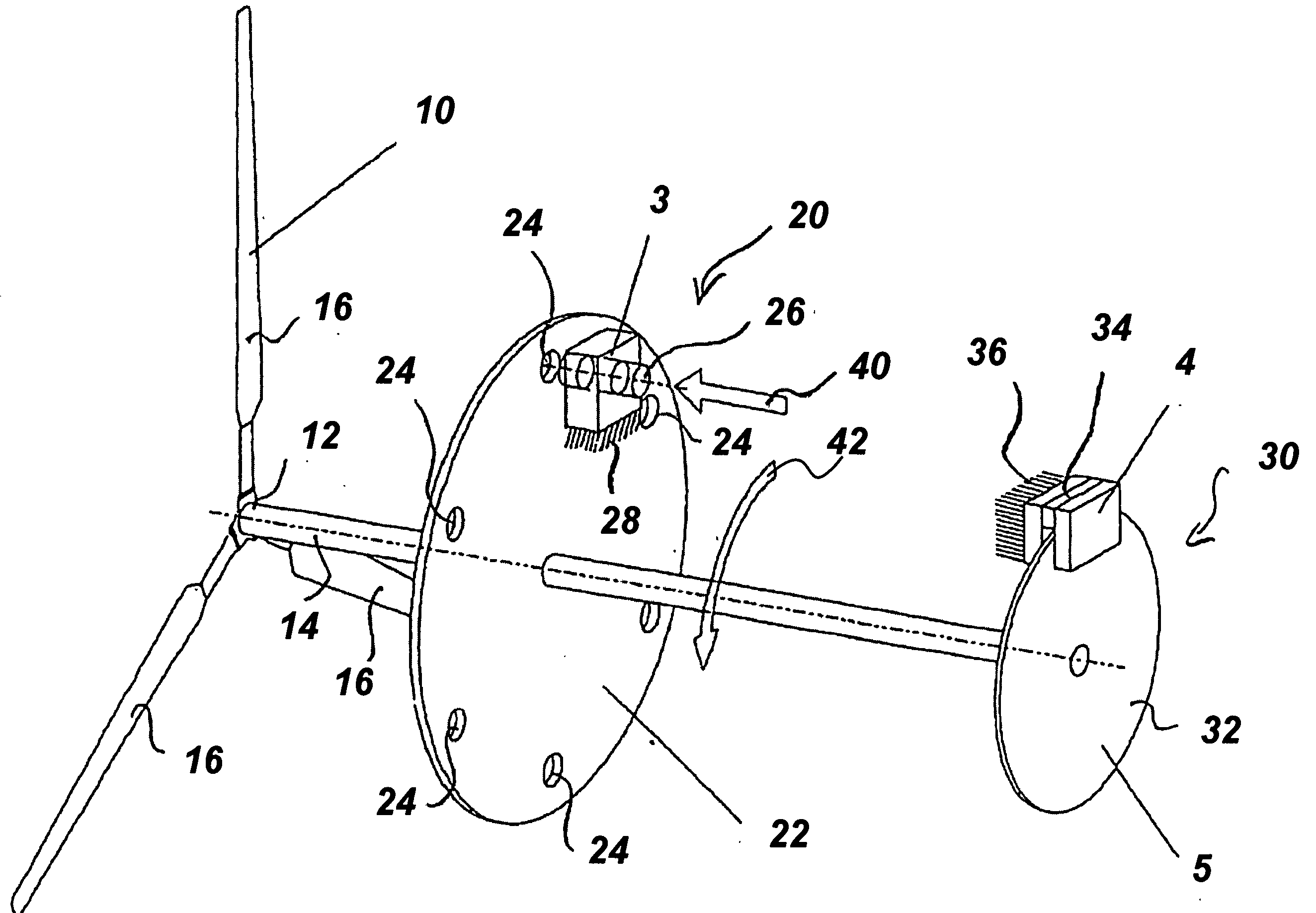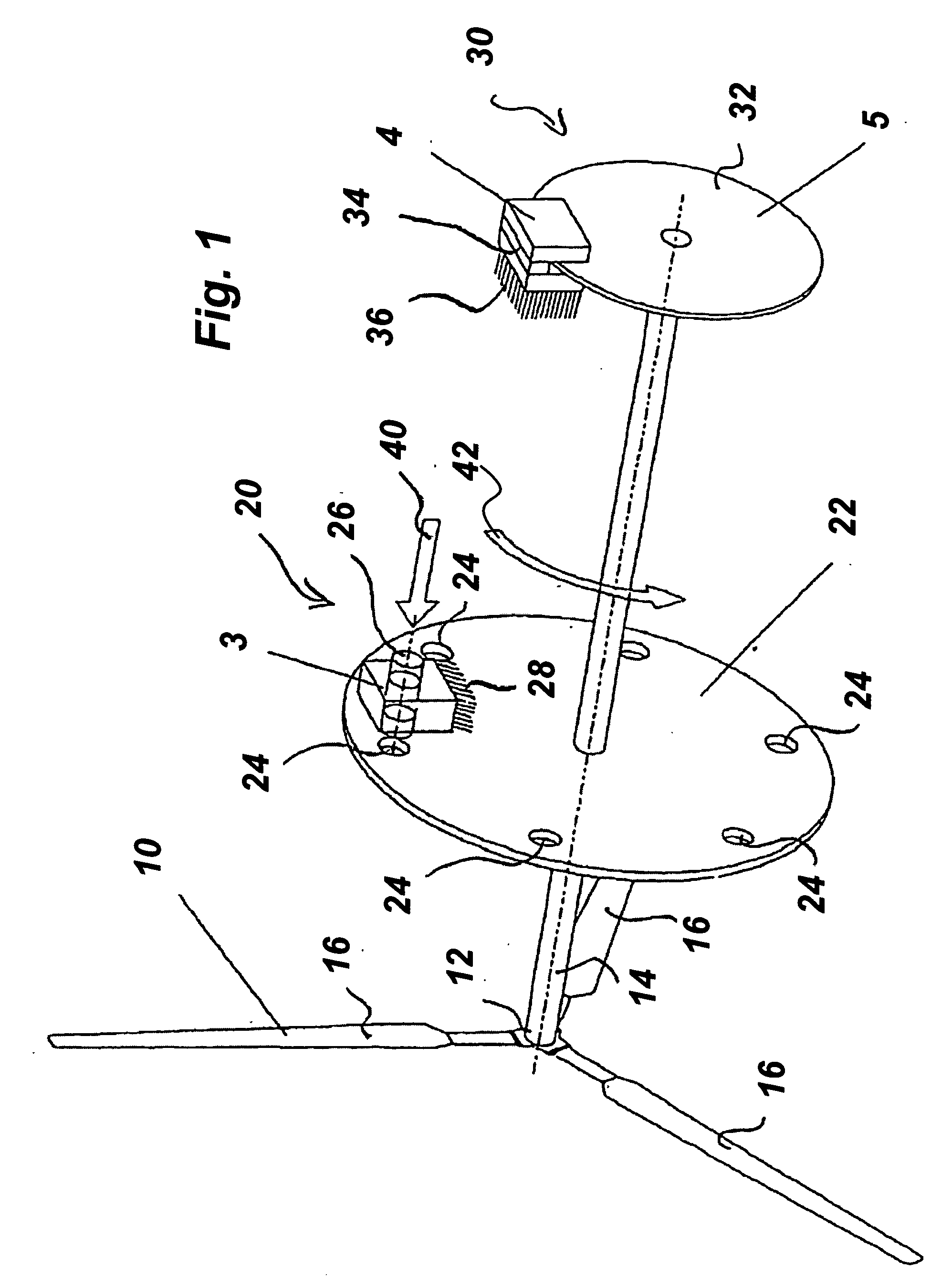Automatic braking and locking of a wind turbine
a technology of automatic braking and wind turbines, which is applied in the direction of wind energy generation, motors, engine fuctions, etc., can solve the problems of increasing the risk of service personnel being injured, the locking device may be damaged, and the manual actuation and especially the manual positioning of the locking disk will be increasingly difficult for service personnel to achieve the effect of reducing the risk associated and increasing work safety
- Summary
- Abstract
- Description
- Claims
- Application Information
AI Technical Summary
Benefits of technology
Problems solved by technology
Method used
Image
Examples
Embodiment Construction
[0019] In the following detailed description, reference is made to the accompanying drawing which forms a part hereof wherein like numerals designate like parts throughout, and in which are shown, by way of illustration, a specific embodiment in which the invention may be practiced. It is to be understood that other embodiments may be utilized and structural or logical changes may be made without departing from the scope of the present invention. Therefore, the following detailed description is not to be taken in a limiting sense, and the scope of the present invention is defined by the appended claims and equivalents thereof.
[0020] Reference in the specification to “one embodiment” or “an embodiment” means that a particular feature, structure, or characteristic described in connection with the embodiment is included in at least one embodiment. The appearances of the phrase “in one embodiment” in various places in the specification do not necessarily all refer to the same embodimen...
PUM
 Login to View More
Login to View More Abstract
Description
Claims
Application Information
 Login to View More
Login to View More - R&D
- Intellectual Property
- Life Sciences
- Materials
- Tech Scout
- Unparalleled Data Quality
- Higher Quality Content
- 60% Fewer Hallucinations
Browse by: Latest US Patents, China's latest patents, Technical Efficacy Thesaurus, Application Domain, Technology Topic, Popular Technical Reports.
© 2025 PatSnap. All rights reserved.Legal|Privacy policy|Modern Slavery Act Transparency Statement|Sitemap|About US| Contact US: help@patsnap.com


